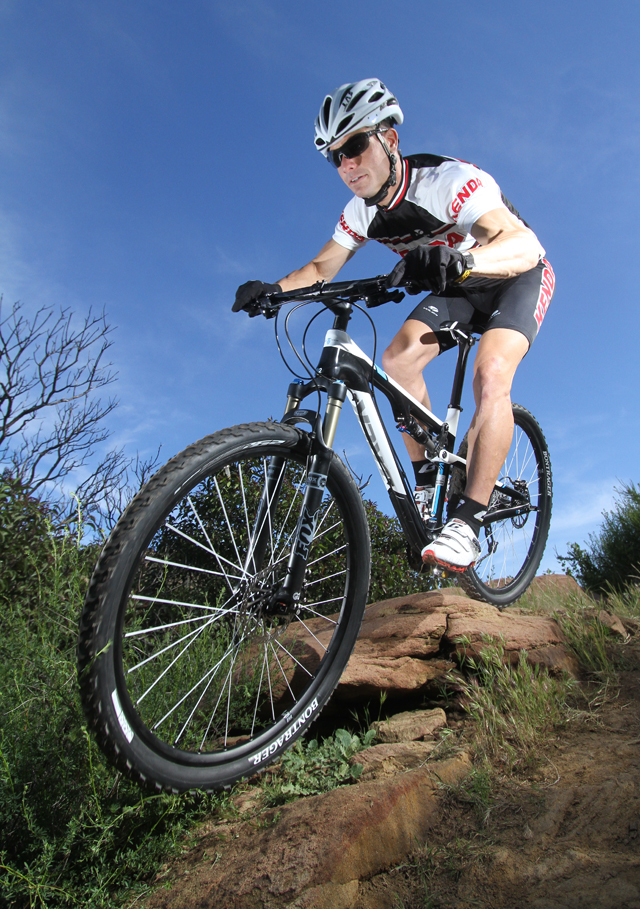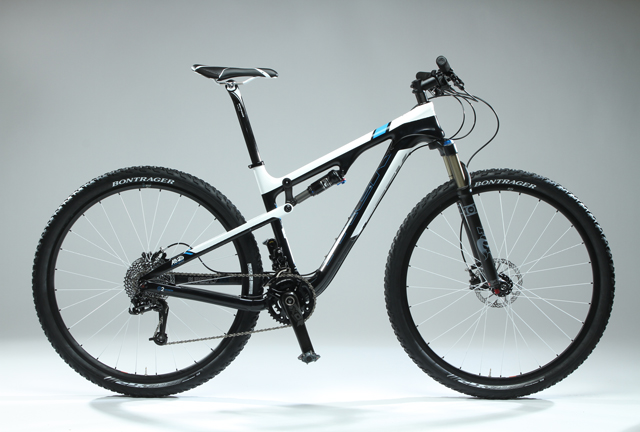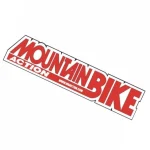Bike Test: Trek Superfly 100 Elite

A Stealth Fighter on Singletrack: The Trek Superfly 100 Elite

Still confusing to some riders, the “Fisher” brand was absorbed into its parent company, Trek, late in 2010. Bikes that used to be Fishers (like the Superfly 100 tested here) are now Treks with a “Gary Fisher Collection” notation on the frame. You can get your Fisher Collection bike at a Trek bike shop now, but the Fisher Collection models still have their own personalities?just like the man whose name is on the top tube.
WHO IS IT MADE FOR?
The Superfly 100 Elite is the Fisher Signature line’s top cross-country race bike, so it is primarily intended for cross-country racers. That doesn’t mean, however, that all others need to pass on this bike. The Superfly 100 is more versatile than many short-travel cross-country race bikes and will serve as an everyday trailbike for the right rider in the right location.
WHAT IS IT MADE FROM?
The Superfly 100 Elite frame is OCLV Mountain carbon fiber made in Waterloo, Wisconsin. OCLV stands for “optimum compaction, low void.” Optimum compaction means
the carbon fiber gets heated and pressurized in strategic locations to compress multidirectional layers of the material. This process also squeezes out microscopic gaps that occur
between the carbon layers. The “Mountain” means that Trek uses tricks in the carbon fiber lay-up to better address off-road factors that roadies don’t have to worry about, like
projectiles hitting the downtube and stays. The E2 head tube is tapered from 1 1/8 to 1 1/2 inches, and below the direct-mount front derailleur are integrated bottom bracket cups. The rear suspension uses Trek’s Active Braking Pivot. Trek offers five sizes of the Superfly 100 Elite (15.5, 17.5, 19, 21 or 23 inches) to accommodate riders of all sizes.
WHICH COMPONENTS STAND OUT?
The bike is black and white (including white spokes) with a hint of blue. It looks like somebody removed the graphics. The “Bontrager” on the tire’s sidewall is more visible than
any graphic on the frame. We like the understated presentation. It’s like the bike is saying, “I don’t need to brag; just ride me and you’ll understand.” Fox Racing Shox makes a custom version of their F100 RLC 29 fork for the Superfly 100. What’s different? The fork’s offset is increased to 51 millimeters to work with the Fisher Collection’s G2 frame geometry. The Superfly 100 Elite uses a 2×10 SRAM X0 drivetrain that you lose if you go for the 3×10 Shimano-drivetrained Superfly 100. You also save $1370 switching to the Superfly 100.

HOW DOES IT PERFORM?
Setup: Trek delivers the Superfly 100 Elite (and all their top-end suspension bikes) with sag measuring tools that snap on the shock and fork. These handy tools take the guesswork out of setting sag. They also make it simple and fun to check your sag at regular intervals.
Ergonomics: The Superfly 100 Elite positions its pilot in an aggressive yet very comfortable position. You feel slightly biased to the rear, and top to bottom you are centered. No part of the frame, suspension or cable routing comes in contact with the rider. Trek spec’ed a 1-inch-wider bar than on our last Superfly 100 test bike.
Pedaling: The 2×10 drivetrain feels so right for a bike this light. There is no searching for the right ratio. You pick a gear and it works. It takes little effort to get the Elite up to speed, and once you are there, the bike holds momentum like a champ. The bike’s shock allows the rider to set the ProPedal to the firmest platform, turning it on for hard efforts and off for descending, or select the softest setting and leave it on all the time. Either technique will work, depending on the rider’s style.
Cornering: The bike only requires a light touch, or you will find yourself over-correcting in every turn. We have to assume this is because the wrecking crew got used to the
slacker steering of the Fisher Collection Rumblefish II tested in January. The Elite delivers a cross-country-quick response and feels more like a 26er than a 29er in the tight stuff.
Climbing: There were all sorts of tricks needed to get the most out of the older Superfly 100’s 3×9 drivetrain on a climb. Not with the Elite. The 2×10 drivetrain makes things easy. Just find that sweet-spot gear and either spin or torque your way up the hill. Take your pick, because either will work. This bike shines on tight, uphill switchbacks.
Descending: Simply amazing. A Fisher G2 geometry trick results in a bike that offers cat-like reflexes along with high-speed stability. Braking doesn’t firm up the rear suspension. There is zero chatter. The big wheels make small work of rough trail. A rider used to 26-inch wheels on a cross-country bike will descend faster on the Elite with more confidence.

TRICKS, UPGRADES OR TIPS?
We’d like to try Maxxis Ikon or Kenda Small Block Eight tires on our hardpacked trails where the stock Bontrager tires seemed like overkill. Our bike came ready to roll tubeless
with Bontrager sealant inside. One of the tires did leak air over time, so switching to Stan’s NoTubes sealant would be a good idea. While we had zero problems with the bike’s rear hub, we spoke to several owners who reported excessive noise and performance issues. In both cases, the affected hubs were replaced under warranty. It is probably a good idea to periodically (once a week) check the rear hub for play or drag issues and pay attention to any weird noises.
BUYING ADVICE
Trek made this simple because you have more options than in the past. The Elite is $700 more than the first Superfly 100 we tested, but you get a drivetrain that is far superior for racing situations and most trail-riding situations. Trek also offers the $4930 Superfly 100 ($670 less than the first Superfly 100) that has a 3×10 drivetrain and is attractive for the racer on a budget or trail rider looking for slightly easier gearing on long climbs. If your trails are technical, rocky, rooty and challenging in general, the Trek Rumblefish II will edge out the Superfly 100 Elite. In every other imaginable situation, the Elite is the go-to bike. If you are a racer, this is a competitive race bike. If you never plan to race but want a high-performance, lightweight bike, you will win with the Elite.

Mountain Bike Action Magazine has tests like this (along with bike tests) in every issue. If you found this review helpful, don’t miss another one by subscribing today. Mountain Bike Action Magazine is a monthly publication about all things mountain biking.




